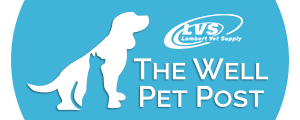
Comparing Disinfectants that Kill Pathogens Important in Pet Facilities | Wellpet Post-Lambert Vet Supply
Posted March 26, 2020 in General

What Pathogens Do Pet Disinfectants Kill?
Comparing pet disinfectants is a confusing but important process when it comes to the types of pathogens they can kill in a pet facility, such as veterinarian office, boarding kennel, groomer, shelter, doggie daycare, kennel, or homes. The key to disinfectant information is “Always read product label carefully”. Found on the product label is the label claim that lists the pathogens it can kill. The product must follow an EPA-approved standardized test method in order to get a claim listed for each pathogen on the disinfectant label.
Pathogens include Viruses, Bacteria, and Fungi.
- Viruses
The majority of pathogens pets encounter are viruses. They are categorized as Non-enveloped viruses and Enveloped viruses. Most viruses can be killed by disinfectants. The hardest to kill are Non-enveloped viruses. Non-enveloped virus examples are Canine parvovirus, Feline Panleukopenia, or Feline Calicivirus. Enveloped virus examples are canine coronavirus, feline coronavirus, or canine Distemper. A good rule of thumb is if a disinfectant label claim lists it can kill a Non-enveloped virus, it will also be able to kill an Enveloped virus. - Bacteria
Another significant pathogen type are bacteria. Some types of bacteria are harder to disinfect than others. Among the most difficult bacteria to disinfect are Staphylococcus aureus, Pseudomonas aeruginosa, or Mycobacteria. So, again read the product label claim for activity against these bacteria for protection in your facility. - Fungi
The final pathogen category is fungi. Dermatophytes and Aspergillosis are common fungal infections. Dermatophytes such as Trichophyton mentagrophytes and Microsporum canis, are both types of ringworm. Use the product label to see if the disinfectant has activity against the fungus types you are encountering.
The pathogen information is a guide to assist you in understanding product labels and if the disinfectant is killing the pathogens. Contact the product manufacturer if you are unsure of its ability to kill a certain type of infectious agent.
Efficacy or the ability to kill the pathogen’s variables:
Follow all disinfectant label instructions carefully for efficacy against certain pathogens.
- Dilute rate for a pathogen.
- Contact Time (Wet Time – treated surface must remain thoroughly wet to kill pathogen). Some disinfectants have surfactants or wetting agents that aid contact time and help disinfect porous areas, such as concrete.
- Inactivated by contact with organic material.
- Stability after dilution.
- Cleaning or degreasing before disinfectant use.
- Rinse required after disinfectant application.
Environmental and health concerns in disinfectant use additional variables:
- Corrosive to surfaces
- Biodegradable
- Low Toxicity
- Recommendation of masks and or gloves during solution preparation.
- Cautions against mixing chemicals together.
Properties of Disinfectants Reference Chart »
How to Read Disinfectant Product Label »
Preparation for Cleaning and Disinfecting Pet Facilities
- Remove all pets and food from the area to be cleaned and disinfected.
- Remove all organic material (litter, debris, feces, e.g.) floors, walls and surfaces of kennels, cages, or other pet handling areas.
- Empty or cover all feeders and waterers than can’t be removed.
- Thoroughly clean all surfaces with a degreaser or detergent and rinse with water. Some disinfectants may not require this step if area is not heavily soiled. Check product label directions.
- Apply disinfectant solution to floors, walls and other surfaces of the kennels, cages, or other pet handling areas. It is very important that surfaces are thoroughly wet and remain wet for the appropriate contact time. Check product label directions.
- Rinse area after dry if applicable for disinfectant used. Check product label directions.
- Allow surfaces to dry before reintroducing animals back into the kennels, cages, or other pet handling areas.
- Clean and disinfect all equipment used to remove organic material such as forks, shovels and scrapers.
Killing pathogens is important to preventing infectious disease in your facility. Choose the pet disinfectant that best suits your needs!

